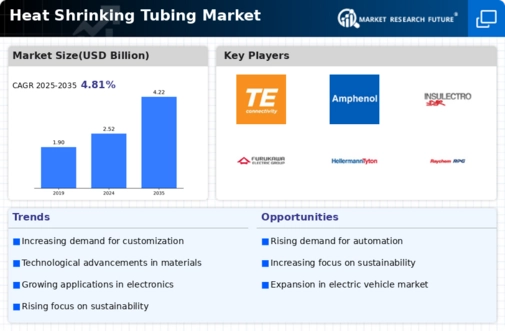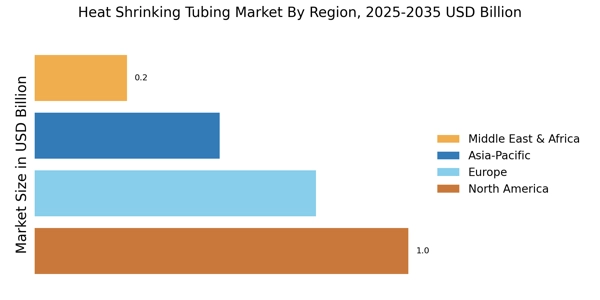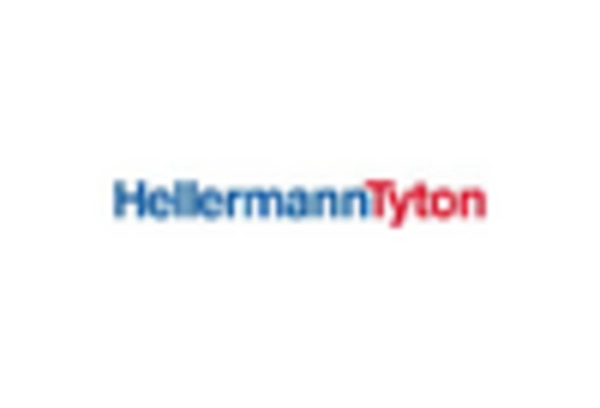Growth in Telecommunications Sector
The telecommunications sector's expansion seems to significantly influence the Heat Shrinking Tubing Market. With the ongoing rollout of 5G networks and the increasing demand for high-speed data transmission, the need for effective cable management and protection is paramount. Heat shrinking tubing is utilized extensively in this sector to ensure the durability and reliability of cables and connectors. Market data indicates that the telecommunications segment is expected to witness a compound annual growth rate (CAGR) of over 6% through 2025, highlighting the critical role of heat shrinking tubing in supporting infrastructure development.
Increased Focus on Safety Standards
The heightened emphasis on safety standards across various industries appears to be a significant driver for the Heat Shrinking Tubing Market. Regulatory bodies are increasingly mandating the use of high-performance materials that can withstand extreme conditions, thereby ensuring the safety and reliability of electrical systems. This trend is particularly evident in sectors such as automotive and aerospace, where compliance with safety regulations is non-negotiable. As a result, manufacturers are likely to invest in innovative heat shrinking tubing solutions that not only meet but exceed these safety requirements, potentially leading to a more robust market landscape.
Sustainability Trends in Manufacturing
The growing trend towards sustainability in manufacturing processes appears to be influencing the Heat Shrinking Tubing Market. As companies strive to reduce their environmental footprint, there is a rising demand for eco-friendly materials and production methods. Manufacturers are increasingly exploring biodegradable and recyclable options for heat shrinking tubing, which could appeal to environmentally conscious consumers and businesses. This shift towards sustainable practices may not only enhance brand reputation but also open new market opportunities, as industries seek to align with global sustainability goals.
Rising Demand in Electrical Applications
The increasing demand for heat shrinking tubing in electrical applications appears to be a primary driver for the Heat Shrinking Tubing Market. As industries such as automotive, aerospace, and consumer electronics expand, the need for reliable insulation and protection of electrical components intensifies. In 2025, the electrical segment is projected to account for a substantial share of the market, driven by the growing adoption of electric vehicles and advanced electronic devices. This trend suggests that manufacturers are likely to focus on producing high-quality heat shrinking tubing that meets stringent safety and performance standards, thereby enhancing the overall market growth.
Technological Innovations in Material Science
Technological advancements in material science seem to be reshaping the Heat Shrinking Tubing Market. The development of new polymer blends and additives enhances the performance characteristics of heat shrinking tubing, such as temperature resistance, flexibility, and chemical stability. These innovations are likely to attract a broader range of applications, from industrial to consumer products. Market analysis suggests that the introduction of advanced materials could lead to a notable increase in market share for manufacturers who prioritize research and development, thereby fostering competitive advantages in the industry.


















Leave a Comment